Possessive adjectives are words that are used to modify nouns and pronouns in English grammar and show a relationship of belonging between the noun or pronoun and the person or thing possessing it. In this article, we will explore the proper usage of possessive adjectives and provide examples and exercises to help you master this important aspect of English grammar.
所有格形容词是用于修饰英语语法中的名词和代词的单词,并显示名词或代词与拥有它的人或事物之间的归属关系。在本文中,我们将探讨所有格形容词的正确用法,并提供示例和练习来帮助您掌握英语语法的这一重要方面。
Introduction to Possessive Adjectives
所有格形容词简介
What are possessive adjectives?
什么是所有格形容词?
Possessive adjectives are words that indicate ownership or possession in a sentence. They are used to modify nouns and pronouns and show a relationship of belonging between the noun or pronoun and the person or thing possessing it. Possessive adjectives always come before the noun they modify and are used to indicate who or what something belongs to. For example: “That is my car.” In this sentence, “my” is a possessive adjective indicating that the car belongs to the speaker. Some common possessive adjectives in English include “my,” “your,” “his,” “her,” “its,” “our,” and “their.”
所有格形容词是在句子中表示所有权或占有的词。它们用于修饰名词和代词,并显示名词或代词与拥有它的人或事物之间的归属关系。所有格形容词总是出现在它们修饰的名词之前,用于表示某物属于谁或什么。例如:“那是我的车。在这句话中,“my”是一个所有格形容词,表示汽车属于说话者。英语中一些常见的所有格形容词包括“我的”、“你的”、“他的”、“她的”、“它的”、“我们的”和“他们的”。
How they are used in English grammar
它们如何在英语语法中使用
In English grammar, possessive adjectives are used to indicate ownership or possession of a noun or pronoun. They are placed before the noun or pronoun they modify and are used to show a relationship of belonging between the noun or pronoun and the person or thing possessing it. For example:
在英语语法中,所有格形容词用于表示名词或代词的所有权或占有。它们被放置在它们修饰的名词或代词之前,用于显示名词或代词与拥有它的人或事物之间的归属关系。例如:
- “My cat is sleeping on the couch.” In this sentence, “my” is a possessive adjective modifying the noun “cat” and indicating that the cat belongs to the speaker.
“我的猫睡在沙发上。”在这句话中,“my”是一个所有格形容词,修饰名词“猫”,表示猫属于说话者。
- “Her phone is ringing.” In this sentence, “her” is a possessive adjective modifying the noun “phone” and indicating that the phone belongs to the person referred to as “her.”
“她的手机响了。”在这句话中,“她”是一个所有格形容词,修饰名词“电话”,表明电话属于被称为“她”的人。
It is important to use possessive adjectives correctly in order to communicate clearly and effectively in the English language. Using the wrong possessive adjective can change the meaning of a sentence and lead to confusion.
正确使用所有格形容词对于用英语清晰有效地交流非常重要。使用错误的所有格形容词会改变句子的含义并导致混淆。
Comparison to possessive pronouns
与所有格代词的比较
Possessive adjectives and possessive pronouns are similar in that they both indicate ownership or possession of a noun or pronoun. However, they are used differently in sentences.
所有格形容词和所有格代词相似,因为它们都表示名词或代词的所有权或占有。但是,它们在句子中的用法不同。
Possessive adjectives are always used before the noun or pronoun they modify, as in the following examples:
所有格形容词总是在它们修饰的名词或代词之前使用,如以下示例所示:
- “My cat is sleeping on the couch.” In this sentence, “my” is a possessive adjective modifying the noun “cat.”
“我的猫睡在沙发上。”在这句话中,“我的”是一个所有格形容词,修饰名词“猫”。
- “Her phone is ringing.” In this sentence, “her” is a possessive adjective modifying the noun “phone.”
“她的手机响了。”在这句话中,“她”是一个所有格形容词,修饰名词“电话”。
On the other hand, possessive pronouns can stand alone as the subject or object of a clause and do not need to be used with a noun or pronoun. Some examples of possessive pronouns include “mine,” “yours,” “his,” “hers,” “its,” “ours,” and “theirs.”
另一方面,所有格代词可以单独作为从句的主语或宾语,不需要与名词或代词一起使用。所有格代词的一些例子包括“我的”、“你的”、“他的”、“她的”、“它的”、“我们的”和“他们的”。
For example: 例如:
- “That car is mine.” In this sentence, “mine” is a possessive pronoun and does not need to be used with a noun.
“那辆车是我的。”在这句话中,“我的”是一个所有格代词,不需要与名词一起使用。
- “Is this bag yours?” In this sentence, “yours” is a possessive pronoun and does not need to be used with a noun.
“这个包是你的吗?”在这句话中,“你的”是一个所有格代词,不需要与名词一起使用。
It is important to understand the difference between possessive adjectives and possessive pronouns and use them correctly in order to communicate effectively in the English language.
重要的是要了解所有格形容词和所有格代词之间的区别,并正确使用它们,以便用英语进行有效交流。
Common Possessive Adjectives in English
英语中常见的所有格形容词
“My” “我的”
“My” is a possessive adjective that indicates ownership or possession by the speaker. It is used to modify a noun or pronoun and show that it belongs to the speaker. For example:
“我的”是一个所有格形容词,表示说话者的所有权或占有。它用于修改名词或代词并表明它属于说话者。例如:
- “My cat is sleeping on the couch.” In this sentence, “my” is a possessive adjective modifying the noun “cat” and indicating that the cat belongs to the speaker.
“我的猫睡在沙发上。”在这句话中,“my”是一个所有格形容词,修饰名词“猫”,表示猫属于说话者。
“Your” “你的”
Your” is a possessive adjective that indicates ownership or possession by the person being spoken to. It is used to modify a noun or pronoun and show that it belongs to the person being addressed. For example:
“你的”是一个所有格形容词,表示被交谈的人的所有权或占有权。它用于修改名词或代词,并表明它属于被称呼的人。例如:
- “Is this your pencil?” In this sentence, “your” is a possessive adjective modifying the noun “pencil” and indicating that the pencil belongs to the person being addressed.
“这是你的铅笔吗?”在这句话中,“你的”是一个所有格形容词,修饰名词“铅笔”,表明铅笔属于被称呼的人。
“His” “他的”
“His” is a possessive adjective that indicates ownership or possession by a male person or animal. It is used to modify a noun or pronoun and show that it belongs to the male person or animal being referred to. For example:
“他的”是一个所有格形容词,表示男性或动物的所有权或占有。它用于修改名词或代词,并表明它属于所指的男性人或动物。例如:
- “His car is parked outside.” In this sentence, “his” is a possessive adjective modifying the noun “car” and indicating that the car belongs to the male person being referred to.
“他的车停在外面。”在这句话中,“他的”是一个所有格形容词,修饰名词“汽车”,表明汽车属于被指代的男性。
Her” “她”
“Her” is a possessive adjective that indicates ownership or possession by a female person or animal. It is used to modify a noun or pronoun and show that it belongs to the female person or animal being referred to. For example:
“她”是一个所有格形容词,表示女性人或动物的所有权或占有。它用于修改名词或代词,并表明它属于所指的女性人或动物。例如:
- “Her phone is ringing.” In this sentence, “her” is a possessive adjective modifying the noun “phone” and indicating that the phone belongs to the female person being referred to.
“她的手机响了。”在这句话中,“她”是一个所有格形容词,修饰名词“电话”,表示电话属于被指的女性。
“Its” “它的”
“Its” is a possessive adjective that indicates ownership or possession by an animal or inanimate object. It is used to modify a noun or pronoun and show that it belongs to the animal or inanimate object being referred to. For example:
“它的”是一个所有格形容词,表示动物或无生命物体的所有权或占有。它用于修改名词或代词,并表明它属于所指的动物或无生命物体。例如:
-
- “The cat chased its tail.” In this sentence, “its” is a possessive adjective modifying the noun “tail” and indicating that the tail belongs to the cat.
“猫追着尾巴。”在这句话中,“its”是一个所有格形容词,修饰名词“尾巴”,表示尾巴属于猫。
Our” “我们的”
“Our” is a possessive adjective that indicates ownership or possession by a group that includes the speaker. It is used to modify a noun or pronoun and show that it belongs to the group being referred to. For example:
“我们的”是一个所有格形容词,表示包括说话者在内的群体的所有权或占有权。它用于修改名词或代词,并表明它属于所指的组。例如:
- “Our house is on the corner.” In this sentence, “our” is a possessive adjective modifying the noun “house” and indicating that the house belongs to the group being referred to, which includes the speaker.
“我们家在拐角处。”在这句话中,“我们的”是一个所有格形容词,修饰名词“房子”,并表明房子属于被指代的群体,其中包括说话者。
“Their” “他们的”
“Their” is a possessive adjective that indicates ownership or possession by a group that does not include the speaker. It is used to modify a noun or pronoun and show that it belongs to the group being referred to. For example:
“他们的”是一个所有格形容词,表示不包括说话者的群体的所有权或占有权。它用于修改名词或代词,并表明它属于所指的组。例如:
- “Their dog is barking.” In this sentence, “their” is a possessive adjective modifying the noun “dog” and indicating that the dog belongs to the group being referred to, which does not include the speaker.
“他们的狗在吠叫。”在这句话中,“他们的”是一个所有格形容词,修饰名词“狗”,并表示狗属于被指的群体,不包括说话人。
Using Possessive Adjectives Correctly
正确使用所有格形容词
- It is important to use possessive adjectives correctly in order to communicate clearly and effectively in the English language. Here are some tips for using possessive adjectives correctly:
正确使用所有格形容词对于用英语清晰有效地交流非常重要。以下是正确使用所有格形容词的一些提示:
Placement in a sentence
句子中的位置
Possessive adjectives are always placed before the noun or pronoun they modify. For example:
所有格形容词总是放在它们修饰的名词或代词之前。例如:
- “My cat is sleeping on the couch.” In this sentence, “my” is a possessive adjective modifying the noun “cat.”
“我的猫睡在沙发上。”在这句话中,“我的”是一个所有格形容词,修饰名词“猫”。
- “Her phone is ringing.” In this sentence, “her” is a possessive adjective modifying the noun “phone.”
“她的手机响了。”在这句话中,“她”是一个所有格形容词,修饰名词“电话”。














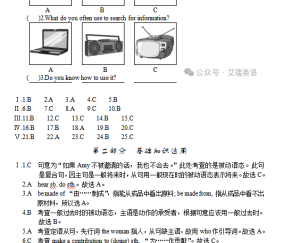
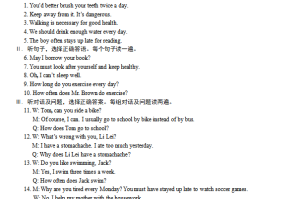


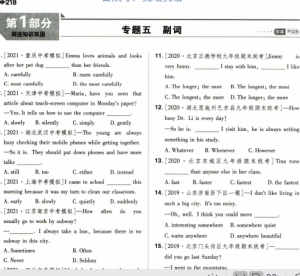
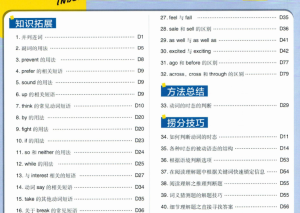
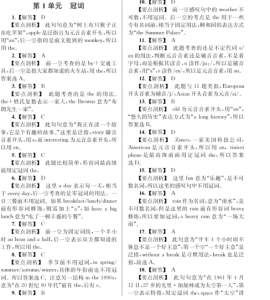
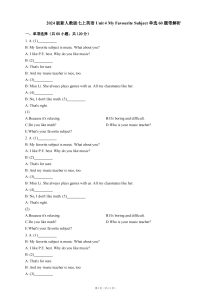



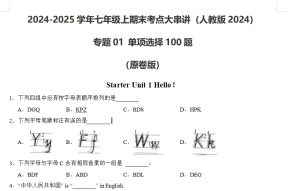
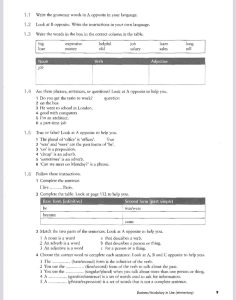



暂无评论内容